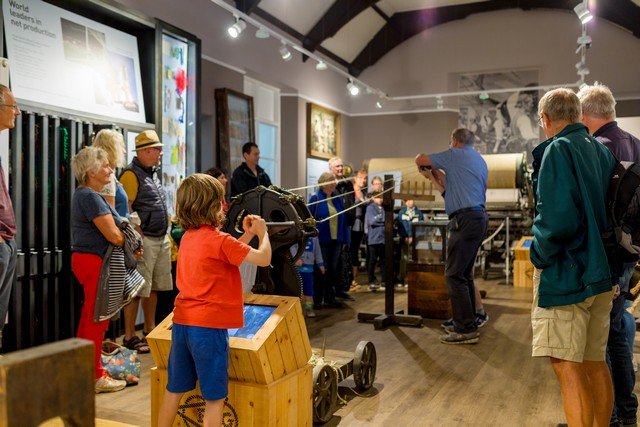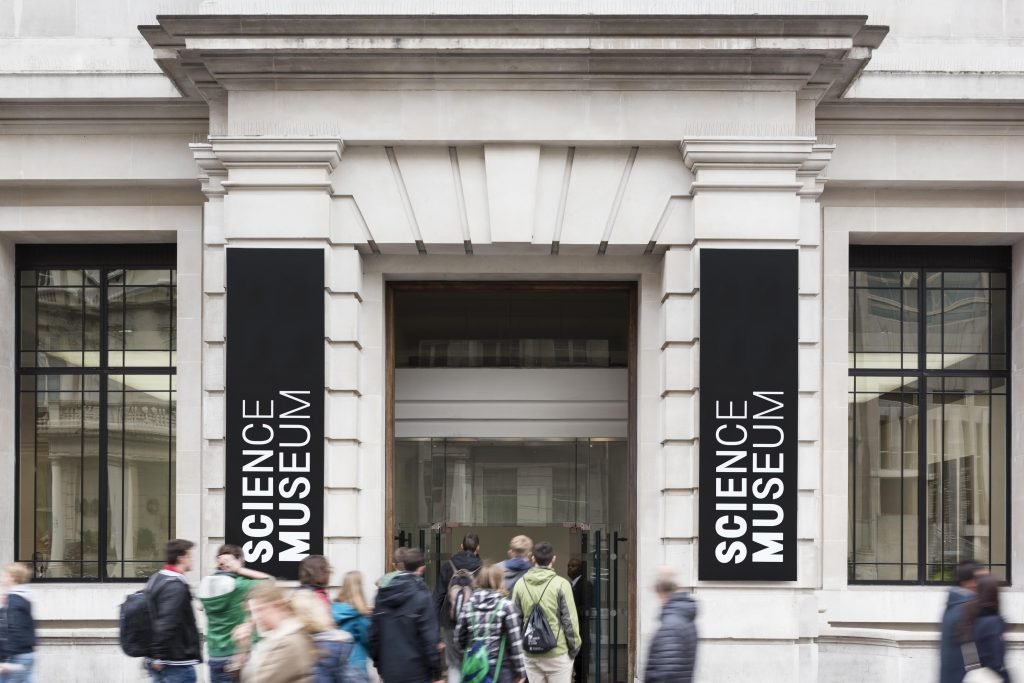Recommendations: Dynamic Collections
To develop empowering and relevant collections we need to understand what we hold. Many museums – particularly those with large collections built up over decades or centuries – are unable to fully account for their material and its provenance.
Collections information is often inadequate and not ready for the digital age. Stores are often full and valuable resources are wasted on items that don’t fit with current collections policies or are duplicated in collections elsewhere.
Museums need to confront these issues and ensure that they have the infrastructure that allows them to make the most of their collections. The next decade will provide many opportunities to make collections dynamic.
A combination of technological innovation, increasing curatorial confidence, partnerships and more collaboration with communities can ensure that collections management is both efficient and impactful, and gives people a real stake in the future of collections.
“The sector as a whole should reduce the shame factor of disposal. It should be that organisations feel supported when they are doing this rather than the fear that they will do it wrong and be criticised.”
Collections 2030 respondent, North West England
We recommend:
8. Support partnerships and knowledge sharing
Museums need to be able to gather, record and present information and narratives about their collections in order to understand their relevance. Museums have experienced a significant loss of subject specialist expertise as a result of funding cuts over the past decade.
Part of the solution to this must be the increasing use of and investment in networks of subject specialists within museums, as well as increasing the participation of non-museum groups – such as universities, volunteers, societies, private collectors and community groups – in collections work.
Sector bodies and national museums should work together to create a strategic approach to investing in subject specialisms across the UK so that all museums are able to call on specialist collections knowledge, even where this is not held in-house.
Case study: Subject Specialist Networks (SSN) working together to reinterpret European and Islamic art
In January 2019 two SSNs, Islamic Art & Material Culture (led by Birmingham Museums) and European Paintings pre-1900 (led by the National Gallery) held a collaborative study day on the topic East meets West: Objects in Renaissance Painting. Through paintings in the Lorenzo Lotto Portraits exhibition and the National Gallery’s wider Renaissance collection, delegates learned about interactions between cultures of Europe and the Islamic world.
The day was supported by funding from Arts Council England and the Pilgrim Trust. It brought together 55 delegates from museums across the UK. Together they developed fresh approaches to the interpretation of collections, made new connections and explored partnership working. The day culminated in a conversation in front of Marco Marziale’s The Circumcision (1500), considering elements such as pseudo-Arabic script and artefacts from the Middle East. It attracted the attention of several members of public, who spontaneously joined the group.
Conversations between curators helped encourage peer-to-peer learning and inspired delegates to develop ideas for engagement with new audiences. One delegate said: “I plan to look again at our European art collection to see if there are ways in which our paintings could be interpreted/displayed to draw out connections with the Islamic world and help to engage more diverse audiences.”
9. Improve training and funding for the rationalisation of museum collections
Museums are encouraged to have a comprehensive collections development policy that provides for the disposal of collections as well as their acquisition. Our research has found that the review and rationalisation of collections remains a difficult issue for many in the sector because of a lack of confidence, capacity and resources.
Improved training is required for museum staff on what constitutes ethical rationalisation practice. This should include a wider recognition within museums of the differing cultural, historical and scientific value of different objects. Funders should also support innovative rationalisation projects that include public input.
“It is a serious and costly failure of national policy that [among] the UK’s 1,700 Accredited museums, each has to make collecting (and disposal) decisions without any easy way of knowing what similar items there might be elsewhere. Where coordinated collecting does exist, it is ad hoc and usually dependent on the personal networks and knowledge of individuals.”
Collections 2030 respondent,South East England

Case study: The right stuff – community rationalisation at Bridport Museum
Thanks to the support of a £100,000 grant from the MA’s Esmée Fairbairn Collections Fund, Bridport Museum is embarking on an innovative three-year project carrying out a collections review as part of an eight-year sustainability programme, which seeks to build a new fit-for-purpose collections centre. Key to this is making sure it has the right objects, for the right reasons, in the right places.
To achieve this, the museum is working closely with community partners to explore what a museum collection means to them. The aim is to be bold – asking each other what to keep, why and where.
The museum – which had no professional curator or proper collecting policy until 1989 – is still struggling to deal effectively with a collection of 50,000 objects, archives and photographs, of which just 5% is on display.
Alongside significant collections of rope and net, Jurassic Coast fossils and archaeology, Bridport Museum has objects covering fine art, social history, textiles, numismatics, archives, photographs and taxidermy. In a situation that many other museums will recognise, these objects, often generic and non-local, threaten to physically and intellectually overwhelm the more significant collections.
The stored collection continues to be a challenge to manage and, in some cases, justify. The museum is asking itself and its community partners: what shall we do with the rest? CASE STUDYWhy do we have certain objects? Should we have them? Who cares?
The museum team is working with community organisations to explore together what the museum should keep, and where to focus future collecting. To be sustainable, they estimate that they will need to rationalise the total collection by up to 30%. This will free up space and resources to better manage the remaining collection, improving storage and accessibility
We recommend:
10. Improve transparency and accessibility of museum collections online
Sector bodies should support the creation and maintenance of an online tool that enables museums to share information about their collections and enables widespread public engagement with collections via third party applications. The existing Culture Grid tool (and other similar facilities) could be substantially modernised for this purpose. Museums should also consider collecting and displaying born digital material, and leaders in this field should collaborate with sector bodies to produce guidance and support.
11. Explore shared storage solutions
Many collections are held in unsuitable stores. Efficient storage solutions in which multiple museums share the same up-to-date storage facility can help to solve this problem, while also ensuring that collections are well documented and digitised.

Case study: Rehousing the collection of the Science Museum Group
As part of the Science Museum Group’s most ambitious project for a generation, the collections team is transforming access to one of the most significant scientific collections in the world, enabling local and global audiences to discover more of this national collection than ever before.
The team at the Blythe House object store in west London are working to study, record, digitise, pack and transport more than 300,000 objects from the Science Museum Group collection to their new home at the National Collections Centre in Wiltshire.
The development of this integrated workflow of specialist teams (hazards, inventory, conservation, photography and packing) together with the implementation of an off-the-shelf inventory app (Asset Panda) has achieved significant efficiencies, enabling 300,000 objects to be processed within two years.
The app connects directly into the museum’s Collection Management System, Mimsy, and has replaced existing systems which were not mobile-enabled, fast or flexible enough to support the workflow.
Investment in technology has also had a significant impact on the photography workflow through the development of an automated image ingest pipeline. Before an object is photographed, its barcode is scanned, enabling automatic embedding of object information into the image metadata. This saves up to 10 minutes of post-processing work per image and ensures the image is inextricably linked to the object.
Efficiencies have also been achieved in more practical aspects of photography. As much of the photographers’ time is spent handling the object, mobile photography workstations were created to enable the photographer to work as close to the objects as possible. These stations were configured for different sizes of objects, minimising adjustments to lighting and cameras. They also pack away into trolleys, ensuring they can easily be moved through the store.
By blending technology with an efficient workflow, the team estimates that at least 91,000 hours of work will be saved during the project. These new processes are already benefiting other projects across the Science Museum Group.
A simplified version of the workflow, together with the photography barcode scanning technology, has been used with great success to help decant approximately 10,000 objects from a store at the Science and Industry Museum in Manchester.